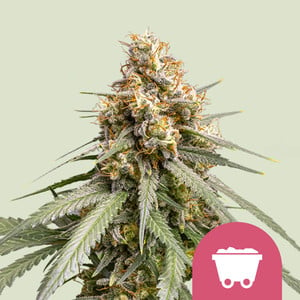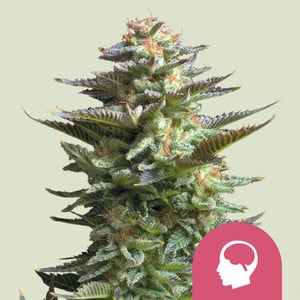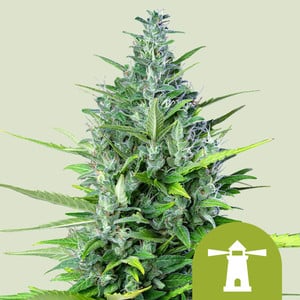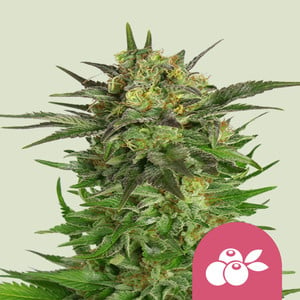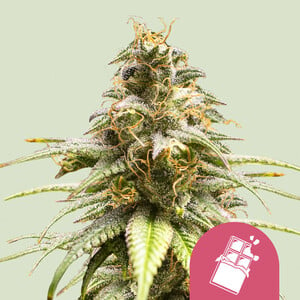.

What Is Haze Weed?
Get the low-down on Haze genetics. Discover their contested origins and profound impact on the cannabis industry. Learn about their chemical profiles and the effects, flavors, and aromas they provide. Then, get to grips with the best modern Haze hybrids available to grow and smoke at home.
Contents:
Key Points
- Haze genetics have helped to shape marijuana culture over decades.
- Old-school varieties continue to offer modern users a taste of nostalgia.
- Newer Haze hybrids are more potent and contain more pronounced terpene profiles.
- Get to know everything about Haze below, from its history to its chemical profile.
Haze Strains: Their History and Origins
Haze strains are among the most popular sativa-dominant cannabis genetics. Many weed users enjoy their long-lasting head highs, which make for an uplifting yet introspective experience. These varieties also attract smokers and growers because of their outstanding aromas and flavors; notes of spice, fruit, sweetness, and earth dominate the mix.
Despite their attractive effects and aromas, Haze strains are slightly more challenging to cultivate. Their sativa genetics cause them to grow tall, meaning growers need to make an effort to train and trim them.
They also feature longer flowering times than indica strains, sometimes taking up to 16 weeks to fully mature. However, in exchange for the extra work they require, they offer staggering yields.
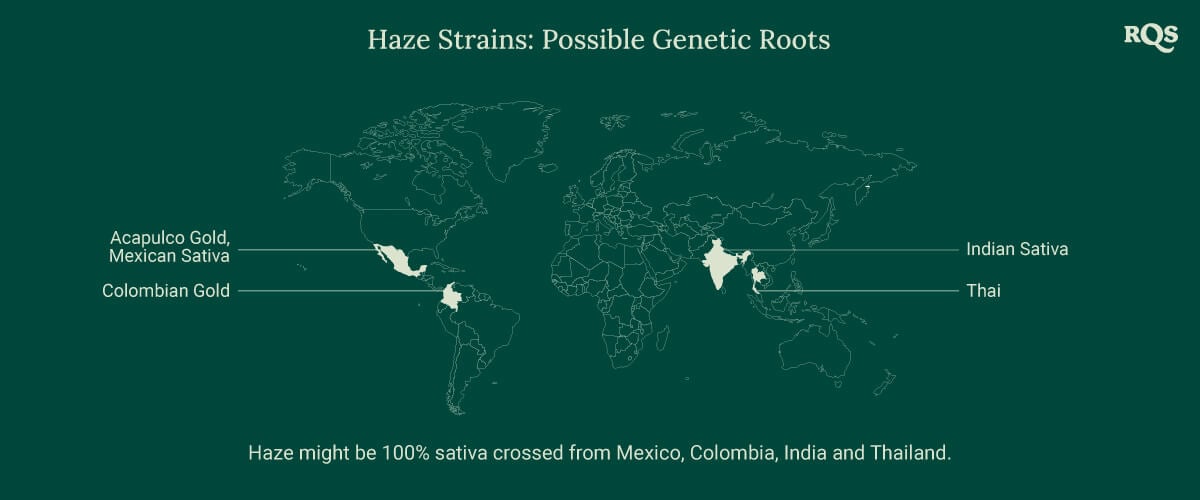
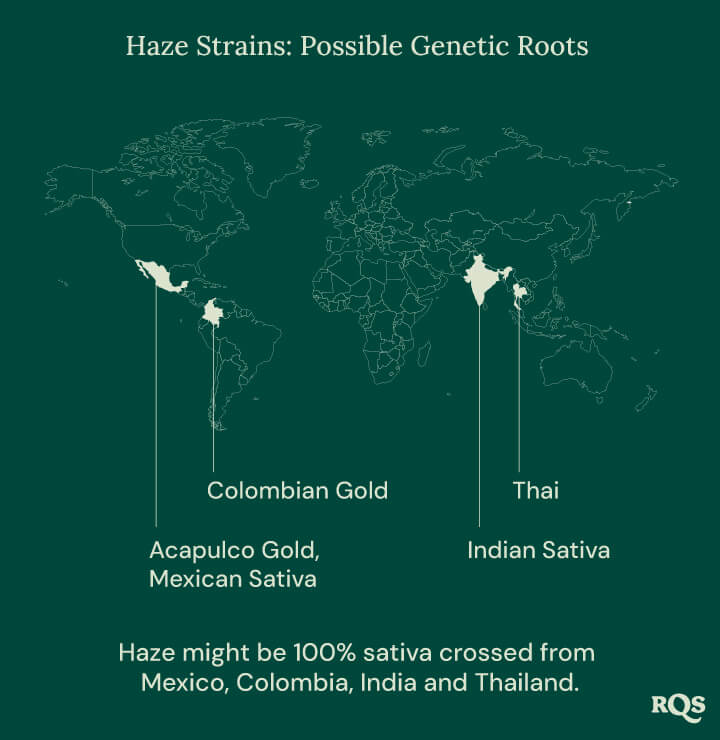
-
Haze Characteristics
- Possible genetic roots: Colombian Gold, Acapulco Gold, Mexican Sativa, Thai or Indian Sativa
- Flavor: spicy, sweet, earthy, woody, citrusy
- Effects: cerebral, energetic, creative, uplifting, motivating, euphoric, psychedelic
- Therapeutic uses: anti-inflammatory, stress relief
-
The Story Of The Haze—The Origins
The story of Haze family of strains begins back in the 1960s and 1970s on the West Coast of the United States. It is believed that the first Hazes have been created by two growers in Santa Cruz, California, the legendary “Haze Brothers”. The alternative medicinal journal “Treating Yourself Magazine” has an article in their #14 issue where they say that Sam “The Skunkman” (the legendary breeder of the Skunk #1) knew the two brothers, “R. Haze” and “J. Haze”. The article continues to say that the two didn’t really set out to breed a particular strain, but that it happened by pure chance when they hybridized some seeds which they had available at that time.
-
What’S In A Haze? No One Really Knows
The exact genetics behind the Haze are not known and are subject to speculation. Back at the time when the Haze Brothers experimented with their strains, many different cannabis varieties entered the West Coast of the US. It is possible that the first Hazes were crosses between Columbian Gold and Thai landraces, but it’s as much likely that their roots are with Acapulco Gold and Indian landraces, or maybe a combination of all of these.
According to cannabis folklore, Hazes went almost extinct at some point. The reason for this is supposedly the fact that growers didn’t like them too much because the strains were difficult to manage and took a long time to flower.
How Haze Made It to Europe
The details of how Haze genetics made it from California to Europe remain shrouded in mystery. The characters involved in the voyage are also a matter of contention.
Some credit the legendary breeder Nevil Schoenmakers, who may have sourced seeds directly from the Haze Brothers in 1969. From here, speculators suggest he then distributed seeds through The Seed Bank of Holland—the first established seed bank in Europe.
Others reject this version of events and instead credit Sam “The Skunkman” with bringing Haze seeds across the Atlantic. As a friend of the Haze Brothers, Sam could have received genetics from them in the early 1980s before departing for Europe.
Disagreeing with both of these possibilities, some lay weed historians state that the Haze Brothers themselves brought Haze across the pond, free from the recruitment of any middlemen.
Whatever the truth of the matter, the arrival of Haze genetics changed the marijuana landscape in Europe and continues to have a significant impact to this day. Breeders have consistently used Haze genetics over the decades to produce popular and productive new hybrids.

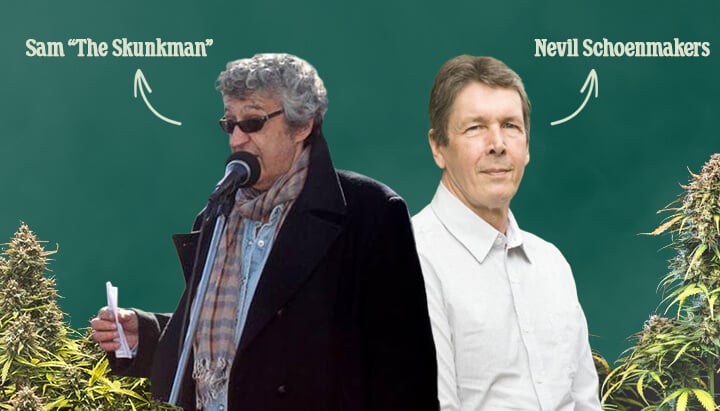
The Haze Legacy
A lot has happened since Haze’s migration from Cali to Europe. Many of the early seed banks that distributed these genetics have disappeared, but Haze strains remain as relevant and popular as ever.
Aside from becoming a go-to strain family for many home growers, Haze genetics have established themselves as reliable, productive, and pleasant to smoke, as proven by their success on the competition circuit.
For example, as one of the most decorated Haze strains, Super Silver Haze won the High Times Cannabis Cup for three consecutive years from 1997 to 1999. Likewise, Amnesia Haze won the overall Cannabis Cup in both 2004 and 2012.
Other notable wins include G13 Haze at the High Times Cannabis Cup in 2007, Super Lemon Haze’s back-to-back wins at the same competition in 2007 and 2008, and Arjan’s Haze No.1’s victory at the Sativa Cup in 2004.
Cannabinoids and Terpenes in Haze Strains
The chemical profiles of Haze strains vary based on genetics and environmental factors. However, they all share a common thread. Check out what you can expect from most Haze cultivars below.
-
THC
Haze strains fall in the middle ground when it comes to potency. While levels of 20–22% are strong by old-school standards, such concentrations shouldn't render you unable to function. Compared to levels of up to 30% in some modern hybrids, classic Haze strains offer a moderate-strength experience.
-
CBD
Haze genetics are typically low in CBD, with levels hovering around 1%. While seemingly insignificant, these trace levels impact the experience and add an element of relaxation.
-
Myrcene
This stoning terpene shows up in abundance in most Haze strains. It serves up flavors of fruit and musk, while also steering the high in a stoning direction.
-
Pinene
This refreshing forest terpene contributes notes of pine and woodiness to many Haze strains. Additionally, it contributes a clear-headed aspect to the Haze high.
-
Caryophyllene
Caryophyllene adds strong notes of savoriness and pepper to most Haze strains. In terms of effects, this terpene provides a physically soothing effect to the Haze experience.
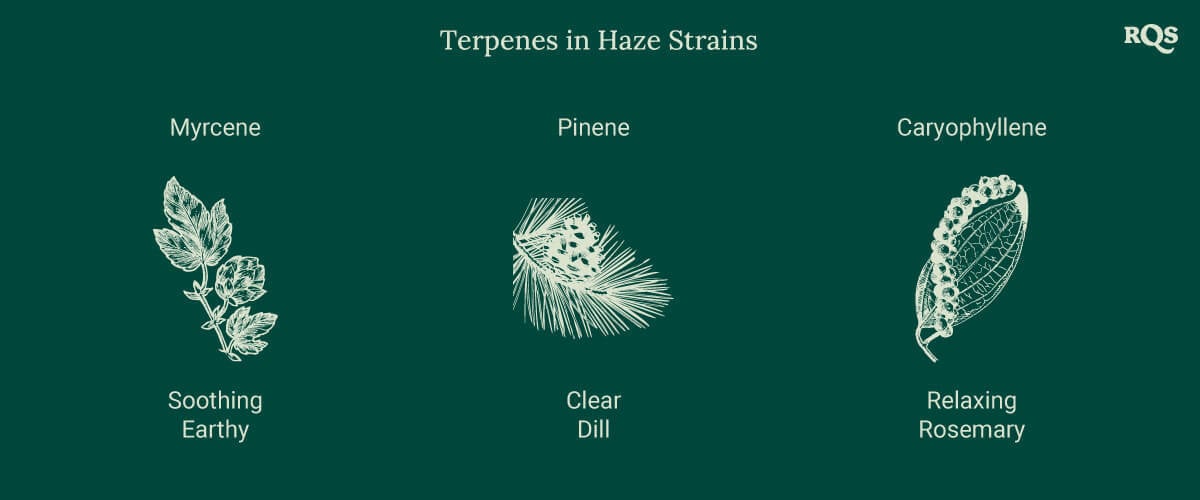
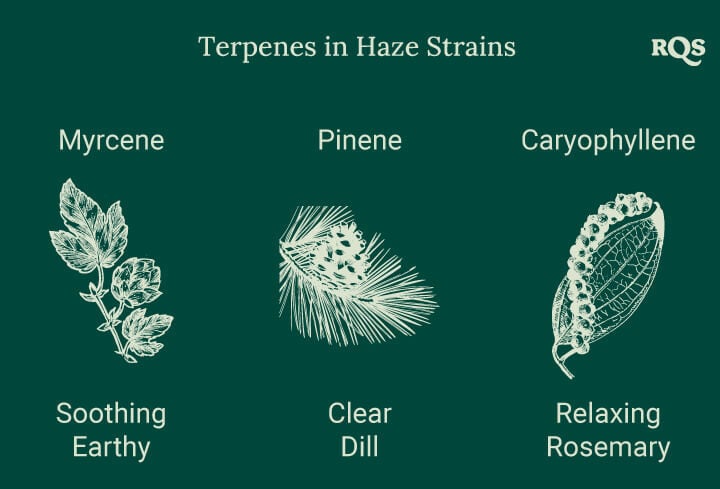
Popular Haze Genetics
Some of the most popular Haze strains among growers today include:
- Shining Silver Haze: The award-winning Shining Silver Haze is a mind-blowing cross between Northern Lights, Skunk, and Haze. If you can wait for the 9–11 weeks that the lady requires for flowering, you will be rewarded with a yield of up to 2.1 oz/ft² of some truly outstanding bud. With her powerful and long-lasting sativa effect that is uplifting, creative, and energetic, she is a firm favorite among sativa lovers. She also has a deliciously sweet flavor, which gives the strain a pleasantly smooth smoke.
Shining Silver Haze
|
|
Haze x (Skunk x Northern Light) |
|
|
21 to 23 oz/m² |
|
|
3 to 4 feet |
|
|
9 - 11 weeks |
|
|
THC: 21% |
|
|
Sativa 75% Indica 25% |
|
|
21 to 23 oz/plant |
|
|
6 to 7 feet |
|
|
Late October |
|
|
Heavy |
- Amnesia Haze: Our Amnesia Haze is yet another spectacular Haze hybrid that scores big among marijuana enthusiasts. This winner of multiple cannabis cups offers a powerful high, supreme flavor, and impressive yields. Her THC content of 22% converges with her complex terpene profile, producing a relaxing body high complemented by mental alertness. Indoors, you can expect to get as much as 2.1 oz/ft² in a flowering time of 10–11 weeks.
Amnesia Haze
|
|
Original Amnesia Haze |
|
|
21 to 23 oz/m² |
|
|
3 to 5 feet |
|
|
10 - 11 weeks |
|
|
THC: 22% |
|
|
Sativa 70% Indica 30% |
|
|
23 to 25 oz/plant |
|
|
6 to 7 feet |
|
|
Late October |
|
|
Long Lasting , Physically Relaxing, Powerful |
- Royal Haze Automatic: Quick, compact, and easy to grow, this strain offers sizable yields in just 12–13 weeks from sprouting.
Royal Haze Auto
|
|
Amnesia Haze x Skunk x Ruderalis |
|
|
10 to 12 oz/m² |
|
|
2 to 3 feet |
|
|
8 - 9 weeks |
|
|
THC: 15% |
|
|
Sativa 50% Indica 20% Ruderalis 30% |
|
|
4 to 6 oz/plant |
|
|
4 to 5 feet |
|
|
12 - 13 after sprouting |
|
|
Clear, Uplifting |
- Haze Berry: Haze Berry has long been a favorite among marijuana users in California. These buds offer moreish flavors of candy and berries alongside a zingy cognitive high perfect for the daytime hours. Indoors, this variety produces up to 1.8 oz/ft² after a blooming period of 9–11 weeks.
Haze Berry
|
|
Blueberry x Shining Silver Haze |
|
|
18 to 20 oz/m² |
|
|
2 to 3 feet |
|
|
9 - 11 weeks |
|
|
THC: 20% |
|
|
Sativa 60% Indica 40% |
|
|
21 to 23 oz/plant |
|
|
5 to 6 feet |
|
|
Late October |
|
|
Long Lasting , Physically Relaxing, Powerful |
- Chocolate Haze: Our Chocolate Haze, a cross between OG Chocolate Thai and Cannalope Haze, has risen in popularity among those who like their smokes super tasty. Along with her deliciously sweet chocolate flavor, she exerts a clear-headed and motivating high that will leave you creatively inspired. Make sure you have enough stash jars to handle yields of up to 1.7 oz/ft².
Chocolate Haze
|
|
OG Chocolate Thai x Cannalope Haze |
|
|
17 to 18 oz/m² |
|
|
3 to 5 feet |
|
|
9 - 11 weeks |
|
|
THC: 20% |
|
|
Sativa 95% Indica 5% |
|
|
16 to 18 oz/plant |
|
|
5 to 7 feet |
|
|
Late October |
|
|
Heavy |
Experience Haze for Yourself
You’re now more than familiar with Haze. You’ve discovered its history, its popularity, its chemical profile, and its modern variants. This family of genetics helped to shape the modern cannabis industry in a substantial way.
When growing and smoking Haze, you have two choices: Opt for old-school genetics for a taste of nostalgia or sow modern Haze hybrids for more potency and superior terpene profiles. Whichever way you go, you won’t be disappointed!


























